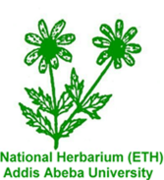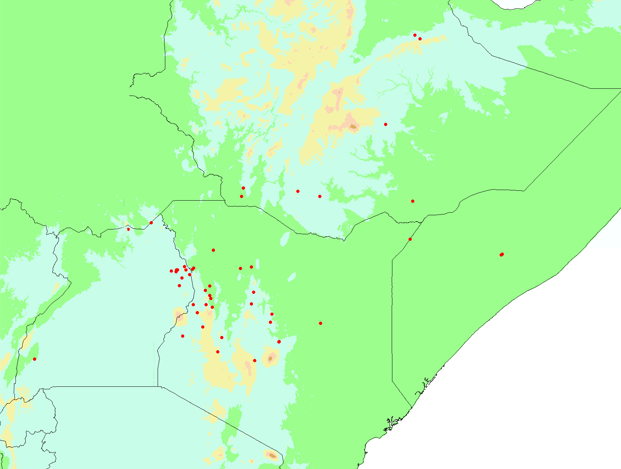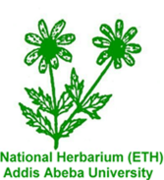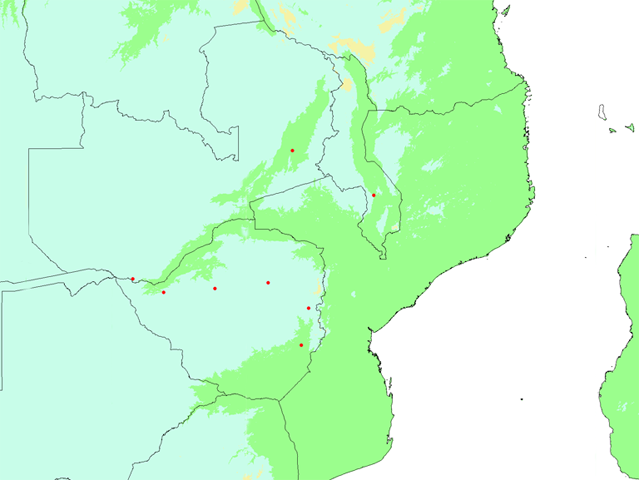Ipomoea spathulata



Kenya, Ethiopia, Somalia.
Acacia-Commiphora woodland, along dry river beds, river valleys, in other areas on red sandy soil, 1000–1850 m.
Ipomoea spathulata Hall f. (1898). Type: Ethiopia, Galla Arussi, Imi to Audo, Riva 1049 (FI, lecto.).
Number of collections seen: 51
|
months |
Jan |
Feb |
Mar |
Apr |
May |
Jun |
Jul |
Aug |
Sep |
Oct |
Nov |
Dec |
|
# flowering specimens |
4 |
2 |
2 |
1 |
6 |
4 |
2 |
6 |
3 |
7 |
4 |
4 |
|
# fruiting specimens |
5 |
2 |
2 |
2 |
4 |
2 |
2 |
3 |
4 |
4 |
5 |
Demissew, S. 2006. Convolvulaceae. In: Hedberg, I., E. Kelbessa, S. Edwards, S. Demissew and E. Persson (eds.), Flora of Ethiopia and Eritrea, vol. 5, pp. 227–231. The National Herbarium Addis Ababa University andThe Department of Systematic Botany Uppsala University; Addis Ababa, Ethiopia and Uppsala, Sweden.
Garcia, M.A., S. Demissew, M. Thulin. 2006. Convovulaceae. In: Thulin, M. (ed.), Flora of Somalia, vol. 3, pp. 227–228. Kew Publishing, Richmond.
Verdcourt, B. 1963. Convolvulaceae. In: Hubbard, C.E. and E. Milne-Redhead (eds.), Flora of Tropical East Africa, pp. 144–145. Crown Agent for Overseas governments and administrations, London.
Demissew, S. 2006. Convolvulaceae. In: Hedberg, I., E. Kelbessa, S. Edwards, S. Demissew and E. Persson (eds.), Flora of Ethiopia and Eritrea, vol. 5, pp. 227–231. The National Herbarium Addis Ababa University and The Department of Systematic Botany Uppsala University; Addis Ababa, Ethiopia and Uppsala, Sweden.
Garcia, M.A., S. Demissew, M. Thulin. 2006. Convovulaceae. In: Thulin, M. (ed.), Flora of Somalia, vol. 3, pp. 227–228. Kew Publishing, Richmond.
Verdcourt, B. 1963. Convolvulaceae. In: Hubbard, C.E. and E. Milne-Redhead (eds.), Flora of Tropical East Africa, pp. 144–145. Crown Agent for Overseas governments and administrations, London.























In Ethiopia the dead fallen leaves are used to feed cattle and goats. It is also a very important ritual symbol, the leaves represent the sleeping hide of living and dead people and cattle; the hide should be as soft as the Gali leaf. Leaves used in the ritual of calling the rain, the naming ritual, the ritual of bleeding the goat-cattle as bowl, the ritual of rubbing the girl’s Koli-sticks and the Maz ritual after having slept with a women. Seeds are used to represent coffee beans if coffee is not available. A piece of creeper with leaves is used by baling men to represent feathers (Strecker 3 (K)).
In Uganda the leaves are used for a ceremony to ensure the sorghum crop (Hudson 181 (K)).
In Kenya the boiled roots diluted in milk are used as a children's medicine (Meyerhoff 3M (K)).